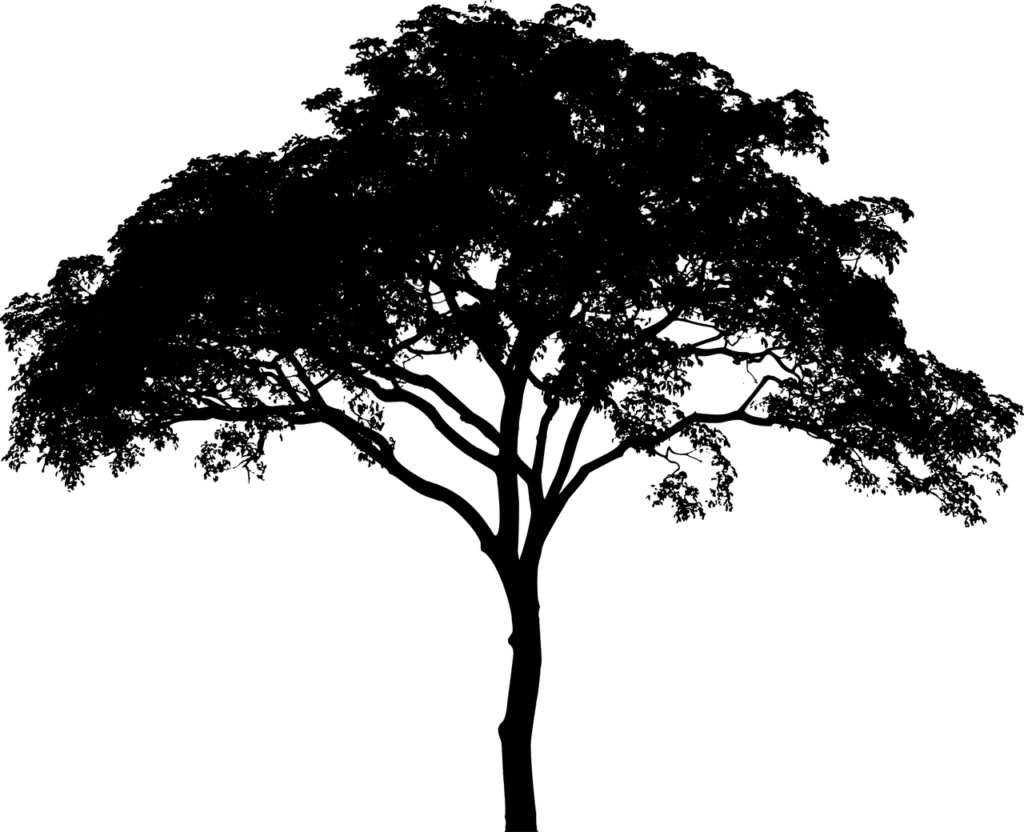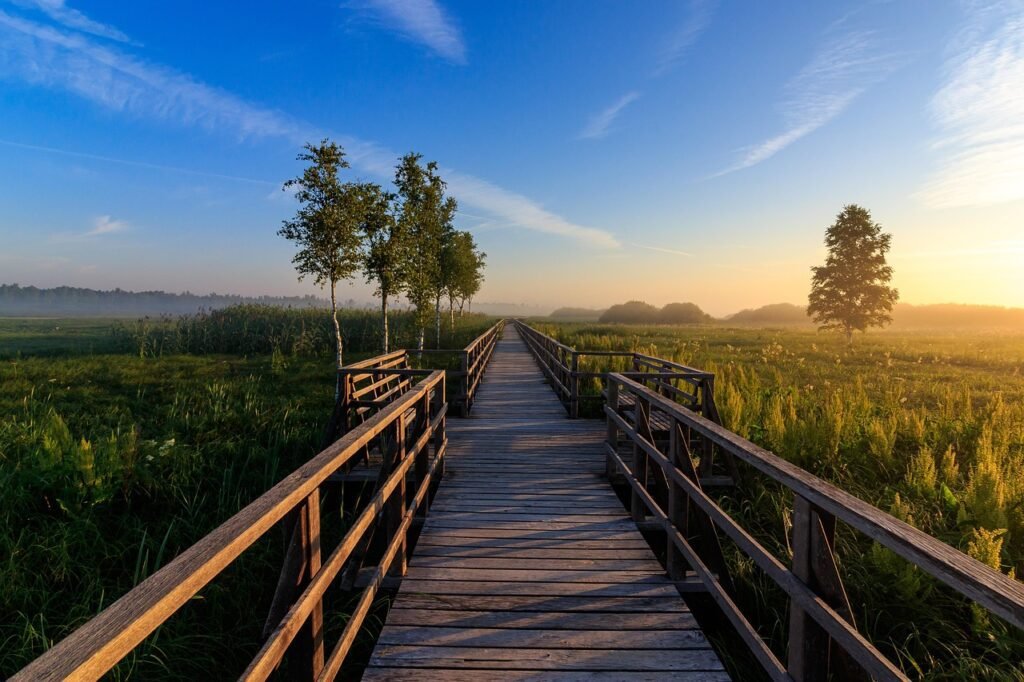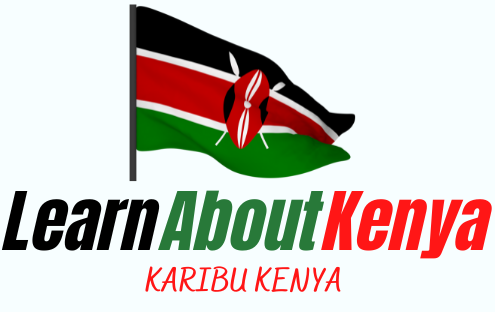In Kenya, the conversation around conservation of natural resources is a matter close to the hearts of its people. With diverse ecosystems and an array of wildlife, Kenyans recognize the importance of preserving the unique landscapes that make their country so special. From the vast savannahs to the snow-capped mountains, the conservation efforts in Kenya go beyond just protecting the environment; it is about safeguarding the livelihoods and cultural heritage of its people. Let’s take a closer look at how Kenyans perceive and value the conservation of natural resources.

This image is property of pixabay.com.
Traditional practices of conservation
Community-based conservation initiatives
In Kenya, there is a deep-rooted culture of community-based conservation initiatives that have been practiced for generations. These initiatives involve the active participation of local communities in the management and protection of natural resources. One example is the establishment of community conservancies, where communities come together to manage wildlife and habitats on their lands. Through this approach, communities have a sense of ownership and responsibility towards conservation, ensuring the long-term sustainability of natural resources.
Cultural beliefs and rituals promoting conservation
Kenyan society is rich in diverse cultures and traditions, many of which promote conservation of natural resources. Indigenous communities, such as the Maasai and Samburu, have traditional beliefs and rituals that emphasize the importance of living in harmony with nature. These cultural practices have helped in the preservation of wildlife and habitats, as they view the land and its resources as sacred. By embracing and promoting these cultural beliefs and rituals, conservation efforts are strengthened and supported by the local communities.
Traditional methods of resource management
Kenyan communities have developed traditional methods of resource management that have been passed down through generations. These methods include rotational grazing, where livestock is moved seasonally to prevent overgrazing and allow for natural regeneration of vegetation. Additionally, the use of traditional medicines derived from plant species is carefully regulated to ensure sustainability and prevent overexploitation. These traditional methods of resource management have proven to be effective in maintaining the balance between human activities and the conservation of natural resources.
Governmental approach to conservation
National Parks and Reserves
The Kenyan government has established several national parks and reserves across the country with the aim of protecting and conserving biodiversity. These protected areas, such as the Maasai Mara National Reserve and Amboseli National Park, serve as havens for wildlife and natural ecosystems. They are managed by government agencies, such as the Kenya Wildlife Service, which enforce regulations and monitor activities to ensure the conservation of these areas. National parks and reserves play a crucial role in preserving Kenya’s natural heritage and attracting tourists from around the world.
Wildlife Management Areas
In addition to national parks and reserves, the Kenyan government has also designated Wildlife Management Areas (WMAs). These are areas of land where communities have been granted the rights to manage and benefit from wildlife and other natural resources. WMAs provide an opportunity for sustainable wildlife conservation while generating income for local communities through eco-tourism and trophy hunting. This collaborative approach between the government and communities helps ensure the conservation of wildlife and promotes economic development at the local level.
Forest Conservation Programs
Recognizing the importance of forests in maintaining the ecological balance and providing valuable resources, the Kenyan government has implemented various forest conservation programs. These programs aim to address deforestation, illegal logging, and encroachment on forested areas. One such initiative is the Green Belt Movement, founded by Nobel laureate Wangari Maathai, which focuses on reforestation and community empowerment. By working together with communities and providing incentives for sustainable forest management, the government strives to protect and conserve Kenya’s forest ecosystems.

This image is property of pixabay.com.
Private sector involvement
Eco-tourism initiatives
The private sector in Kenya has recognized the potential of eco-tourism as a sustainable conservation strategy. Many lodges and tourism operators have adopted eco-friendly practices and offer visitors the opportunity to experience wildlife and natural landscapes while contributing to conservation efforts. By investing in eco-tourism, the private sector not only supports the conservation of natural resources but also creates employment opportunities for local communities and stimulates the economy.
Corporate social responsibility programs
Corporate social responsibility (CSR) has gained importance in Kenya, with many companies integrating sustainable practices into their business models. Some companies actively participate in conservation efforts by supporting local communities in the protection of natural resources. This may involve funding community projects, sponsoring conservation initiatives, or engaging in environmental education and awareness campaigns. Through CSR programs, the private sector can contribute to the long-term conservation of natural resources and foster positive relationships with local communities.
Private conservation organizations
Private conservation organizations, both local and international, play a crucial role in supporting conservation efforts in Kenya. These organizations work closely with communities, government agencies, and other stakeholders to implement conservation projects and build capacity in local communities. They provide financial resources, scientific expertise, and technical assistance to support initiatives such as wildlife monitoring, habitat restoration, and community-based conservation programs. The involvement of private conservation organizations helps augment government efforts and ensures the sustainability of conservation initiatives.
Challenges to conservation efforts
Poaching and illegal wildlife trade
One of the significant challenges facing conservation efforts in Kenya is poaching and illegal wildlife trade. The demand for ivory, rhino horn, and other wildlife products fuels the poaching crisis, putting iconic species such as elephants and rhinos at risk. The government, in collaboration with conservation organizations, has been working tirelessly to combat poaching through enhanced law enforcement, community engagement, and international collaboration. However, the battle against poaching and illegal wildlife trade remains an ongoing challenge that requires sustained efforts and public awareness.
Climate change and its impacts
Climate change poses a significant threat to Kenya’s ecosystems and wildlife. Rising temperatures, changes in rainfall patterns, and increased frequency of extreme weather events can disrupt fragile ecosystems, leading to habitat loss and species decline. The government has been implementing measures to mitigate and adapt to climate change, such as afforestation programs, renewable energy initiatives, and integrated water resource management. Conservation efforts need to integrate climate change considerations to ensure the long-term viability of ecosystems and protect biodiversity.
Habitat destruction and land degradation
Human activities, including unsustainable agriculture, urbanization, and infrastructure development, have resulted in habitat destruction and land degradation in Kenya. Deforestation, the conversion of natural habitats for agriculture, and the unsustainable extraction of natural resources are major contributors to this issue. To address habitat destruction, the government has implemented policies and regulations to protect critical ecosystems and promote sustainable land use practices. However, striking a balance between development and conservation remains a challenge, requiring collaboration between government agencies, communities, and the private sector.

This image is property of pixabay.com.
Attitudes towards conservation among different social groups
Indigenous communities
Indigenous communities in Kenya, such as the Maasai, have a strong cultural and spiritual connection to the land. They view conservation as an integral part of their way of life and have been actively involved in preserving wildlife and ecosystems. Indigenous communities’ traditional knowledge and practices have contributed significantly to conservation efforts. Recognizing their invaluable role, efforts have been made to involve indigenous communities in decision-making processes, provide them with secure land rights, and ensure equitable benefits from conservation initiatives.
Urban populations
Urban populations in Kenya play a crucial role in conservation through their consumption patterns and support for sustainable practices. Many urban dwellers are increasingly aware of the importance of conserving natural resources and minimizing their environmental impact. This is evident in the rising demand for eco-friendly products, support for renewable energy, and participation in recycling programs. Education and awareness campaigns targeting urban populations can further enhance their understanding of conservation issues and motivate them to take action.
Youth and education
The youth in Kenya are the future custodians of the country’s natural resources. Efforts are being made to incorporate environmental education into the school curriculum, raising awareness among students about the importance of conservation and sustainable development. Youth-led organizations and initiatives are also emerging, focusing on environmental activism, conservation projects, and engaging peers in conservation efforts. Empowering the youth with knowledge and providing them with platforms to contribute to conservation efforts can bring about a positive change and ensure a sustainable future.
Effectiveness of conservation policies and programs
Success stories of conservation
Kenya has experienced several success stories in conservation, showcasing the effectiveness of policies and programs. One notable example is the recovery of the black rhino population in the Lewa Wildlife Conservancy. Through concerted efforts, including anti-poaching measures, community engagement, and habitat restoration, the black rhino population has steadily increased, highlighting the importance of collaborative conservation initiatives. Success stories like these serve as inspiration and demonstrate that conservation efforts can yield positive results with the right strategies and commitment.
Lack of implementation and enforcement
Despite the existence of conservation policies and programs, challenges related to their implementation and enforcement persist. Limited resources, inadequate capacity, and corruption can hinder the effective implementation of conservation measures. Additionally, conflicting interests and competing priorities can weaken enforcement efforts, particularly in areas of high human-wildlife conflict. To address these challenges, there is a need for increased investment in conservation, capacity building, and improved governance to ensure the effective implementation and enforcement of conservation policies.
Need for community involvement
The success of conservation efforts in Kenya heavily relies on community involvement and participation. Local communities possess invaluable knowledge and understanding of their landscapes, and their engagement fosters a sense of ownership and responsibility towards conservation. Involving communities in decision-making processes, incorporating traditional practices into conservation strategies, and recognizing the importance of their contribution will strengthen conservation efforts. Collaboration between government agencies, private sector organizations, and local communities is crucial for the long-term success of conservation policies and programs.
Role of international collaboration
Foreign funding and support
International collaboration plays a critical role in supporting conservation efforts in Kenya. Foreign funding and support enable the implementation of large-scale projects, such as anti-poaching initiatives, habitat restoration, and community-based conservation programs. International organizations and donors provide financial resources, technical expertise, and capacity building opportunities, helping to strengthen the capacity of local conservation organizations and government agencies. Sustainable conservation efforts require continued international collaboration and support.
Collaborative research and knowledge sharing
Collaborative research and knowledge sharing between international partners and local institutions contribute to the development of effective conservation strategies. This collaboration facilitates the sharing of best practices, scientific research, and data, enabling informed decision-making and evidence-based conservation. International researchers and institutions often collaborate with local scientists and organizations, conducting joint studies and capacity-building initiatives. By pooling resources and expertise, international collaboration enhances conservation efforts in Kenya.
International agreements and treaties
Kenya is a signatory to several international agreements and treaties aimed at promoting conservation and sustainable development. These include the Convention on Biological Diversity, the Convention on International Trade in Endangered Species of Wild Fauna and Flora, and the Paris Agreement on Climate Change, among others. Through these agreements, Kenya commits to implementing conservation measures, cooperating with other countries, and sharing information and experiences. International agreements provide a framework for collaboration and ensure the conservation agenda is addressed at a global scale.
Incentives for conservation
Economic benefits of sustainable resource management
Conservation can bring economic benefits to local communities and the country as a whole. Sustainable resource management, such as responsible tourism, can generate income, create employment opportunities, and contribute to economic development. By conserving natural resources and promoting sustainable practices, Kenya can attract tourists who are willing to pay a premium for environmentally friendly experiences. Additionally, sustainable fishing, agriculture, and forestry practices can provide livelihoods and income for communities dependent on these resources.
Potential for green jobs and livelihoods
Conservation initiatives have the potential to create green jobs and alternative livelihood opportunities. Green jobs, such as wildlife rangers, eco-tourism guides, and conservation educators, not only contribute to conservation efforts but also provide employment in rural areas. Promoting entrepreneurship and supporting community-led conservation enterprises can empower local communities and contribute to poverty alleviation. By recognizing and tapping into the potential for green jobs and sustainable livelihoods, conservation efforts can thrive while benefiting local communities.
Recognition of conservation efforts
Recognizing and rewarding conservation efforts can be a powerful incentive for individuals and communities. Acknowledging the contributions of conservation champions, both at the community and national level, motivates others to actively participate in conservation activities. Recognition can take various forms, including awards, certificates, and public celebrations. Celebrating successful conservation stories and promoting role models inspire others to get involved and fosters a sense of pride and commitment towards conservation.
Education and awareness
Environmental education in schools
Environmental education plays a crucial role in shaping attitudes and behaviors towards conservation from an early age. Including environmental topics in the school curriculum creates awareness, develops values, and equips students with the knowledge and skills to make informed decisions. Integrated into various subjects, environmental education can provide students with opportunities to explore the interconnectedness of nature, society, and the economy. By incorporating environmental education into schools, Kenya can foster a generation of environmentally conscious citizens who are actively engaged in conservation.
Awareness campaigns and public outreach
Awareness campaigns and public outreach initiatives are effective ways to engage the general public and promote conservation. Through radio shows, television programs, and social media campaigns, information about conservation issues, threats, and opportunities can reach a wide audience. Public outreach programs can include workshops, community meetings, and exhibitions to raise awareness about the importance of conservation and provide practical tips for sustainable living. By targeting different populations and using diverse communication channels, awareness campaigns can foster a culture of conservation in Kenya.
Role of media and digital platforms
Media, including print, broadcast, and digital platforms, play a significant role in shaping public opinion and influencing conservation efforts. Reporting on conservation success stories, highlighting the impacts of human activities on the environment, and raising awareness about conservation initiatives can inspire individuals to take action. Social media platforms provide a space for dialogue, knowledge sharing, and mobilization, connecting individuals passionate about conservation and amplifying their impact. By leveraging the power of media and digital platforms, Kenya can reach a broader audience and engage the public in conservation efforts.
Future prospects for conservation
Integration of conservation into development plans
The integration of conservation into development plans is crucial for ensuring a sustainable future for Kenya. By considering the impacts of development activities on natural resources and ecosystems, the government can make informed decisions that balance economic growth with conservation goals. Incorporating environmental impact assessments, sustainable land use planning, and biodiversity conservation strategies into development plans can help minimize negative environmental consequences and maximize the long-term benefits of development.
Promotion of alternative livelihoods
Promoting alternative livelihoods can alleviate pressure on natural resources and provide communities with sustainable income opportunities. Diversifying income sources through eco-tourism, sustainable agriculture, and value-added products can reduce dependence on activities that harm the environment. Providing training, access to markets, and financial support for community-led conservation enterprises can empower communities to embrace alternative livelihood options and contribute to conservation efforts.
Sustainable resource use and management
Ultimately, sustainable resource use and management are essential for the long-term conservation of natural resources in Kenya. This requires a holistic approach that balances the needs of communities, the environment, and the economy. Implementing sustainable land use practices, enforcing regulations to prevent overexploitation of resources, and promoting responsible consumption are critical components. By adopting sustainable resource use and management practices, Kenya can ensure the conservation of its natural heritage for future generations to enjoy.
In conclusion, Kenya’s view of conservation of natural resources is deeply rooted in traditional practices, community involvement, and collaboration between the government, private sector, and international partners. Through community-based conservation initiatives, cultural beliefs, and traditional methods of resource management, Kenya has demonstrated the importance of local engagement in conservation. The government’s approach, through the establishment of national parks and reserves, wildlife management areas, and forest conservation programs, highlights its commitment to conservation. The private sector’s involvement, through eco-tourism initiatives, corporate social responsibility programs, and private conservation organizations, further supports conservation efforts.
However, there are challenges to overcome, including poaching and illegal wildlife trade, climate change impacts, and habitat destruction. Attitudes towards conservation vary among different social groups, with indigenous communities, urban populations, and youth playing important roles. The effectiveness of conservation policies and programs depends on success stories, implementation and enforcement, and community involvement. International collaboration brings foreign funding, collaborative research, and the recognition of international agreements and treaties.
Incentives for conservation include the economic benefits of sustainable resource management, the potential for green jobs and livelihoods, and the recognition of conservation efforts. Education and awareness, through environmental education in schools, awareness campaigns, and the role of media and digital platforms, shape attitudes and behaviors towards conservation. The future prospects for conservation lie in the integration of conservation into development plans, the promotion of alternative livelihoods, and the sustainable use and management of resources. With concerted efforts and a shared commitment, Kenya can continue to conserve its natural resources for the benefit of current and future generations.

